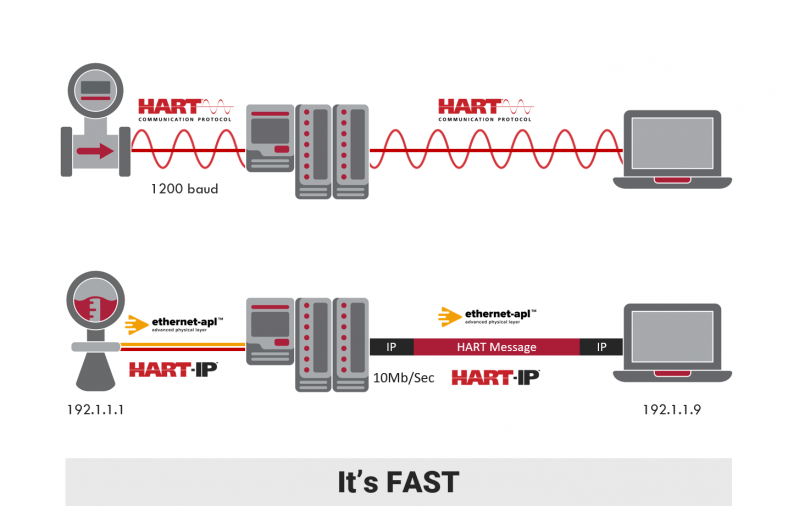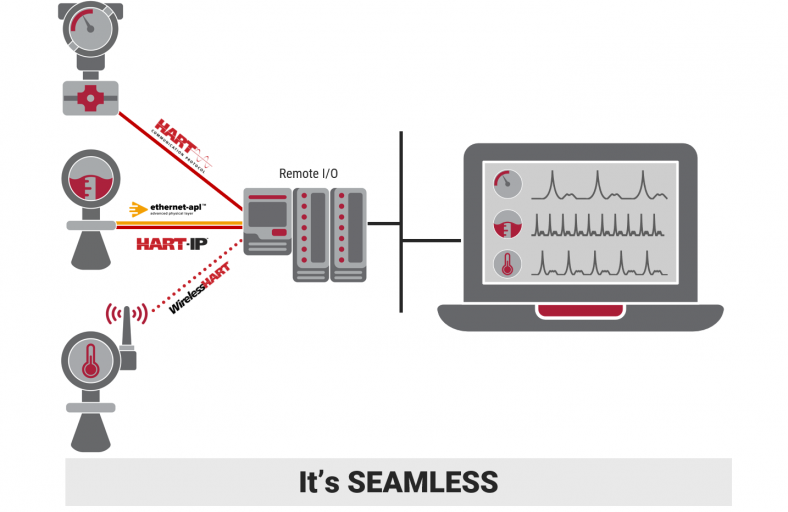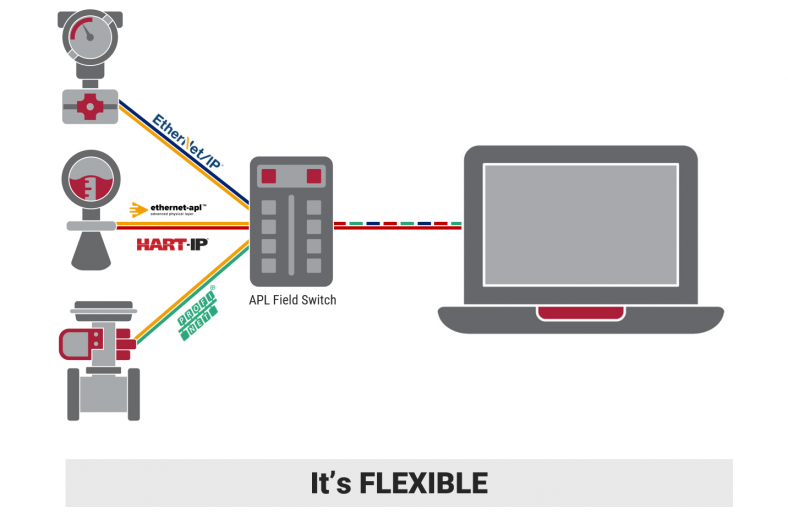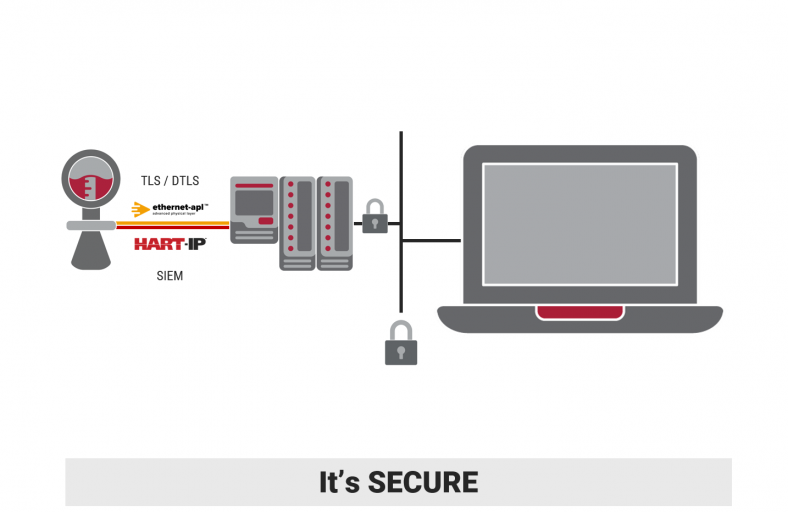HART-IP Explained
HART-IP became part of the HART specification in 2012. But what exactly is HART-IP?
Let's first start with HART. HART is a command/response protocol. A host issues a command and a device responds. When there are many devices in an installation and a host is communicating with many of these devices, the host needs to know the name or address of the device it wants to issue a command to. This addressing scheme is defined in the HART protocol specification.
When internet protocol, or IP, is built into the device the addressing scheme defined by HART is no longer required. Rather, IP-addressing is used and each device is assigned an IP address. It's really as simple as that, HART-IP is the same as HART, but with IP addressing.
Frequently asked Questions about HART-IP
With revision 7.7 of the HART specifications, requirements for specific, minimum security suites are now specified. There are three legs to security: communication security, audit logs and syslogging.
Communication security requires that new devices support the industry standard Internet Protocol (IP) Transport Layer Security (TLS) and Datagram Transport Layer Security (DTLS) suites. HART Commands have been added to simplify security deployment and aid users in navigating multiple security options.
Additional diagnostics and forensic requirements are also included. Devices are required to capture "Audit Logs" that summarize communications activities. Records include: client identification, connection start/stop times, whether the device configuration was changed in that session, etc.
HART-IP devices also must support "syslogging". Syslogs are an industry standard means of publishing device events (to a network's Security Information and Event Management (SIEM) system. All HART-IP devices must support network time (using either NTP or PTP). Consequently, all syslog messages from all network devices are time synchronized, enabling forensics on network-wide behavior and activities.
Combining communication security, audit logs and syslogging results in robust security for HART-IP enabled products.
HART-IP has been deployed in commercial products used in process automation for nearly a decade.
WirelesHART gateways are the most common use of the technology. WirelessHART instruments connect wirelessly to the gateway. Gateways then assemble and transport IP packets from the WirelessHART instruments using HART-IP to control and asset management applications, which in turn disassemble the IP packets, leaving the HART data to be consumed by the application.
HART-IP is also frequently used in wired multiplexors manufactured by numerous FieldComm Group member companies including Honeywell, Moore Industries, Phoenix Contact, Procomsol, Pepperl+Fuchs, Schneider Electric’s Triconex group, and others. Check back soon as we are building a searchable database of HARt-IP product that are already proven and available in the market.
The Ethernet-APL specifications were formally released in June of 2021. Several suppliers of the physical layer components are delivering the necessary parts to build Ethernet-APL enabled products to process automation device and infrastructure partners.
The supply of many products, including silicon components has been adversely affected by the global pandemic. Ethernet-APL components are no exception.
HART-IP with Ethernet-APL enabled instruments will likely be available for purchase beginning in 2023. For now, consider piloting Ethernet-APL infrastructure products with existing 4-20mA enabled products.
Any configuration or asset management tool that supports 4-20mA HART or WirelessHART today should also support HART-IP products.
But, we recommend checking with your host and software suppliers to validate the ability to implement your specific use cases.
Absolutely. At 10Mb/Sec HART-IP Ethernet-APL is over 8000 times faster than 4-20mA HART. Assuming the commission of 500 instruments where a single instrument takes 5 minutes to configure at 1200 baud. Commissioning 500 instruments at this interval would take 2,500 minutes or 41 hours. At 10Mb/Sec these same 500 devices will be commissioned in 30 seconds!
This translates to faster startup, improved return on capital assets, improvements in workforce efficiency.
Security
We've documented best practices for implementing cyber security down to the field level. Check out the technical paper at the link for more.
Control with HART-IP
We conducted a study to determine how well HART-IP would operate in a control application. The results are very positive. Check out the technical paper at the link for more.
HART-IP and Ethernet-APL
Deploying an Ethernet network for field devices can offer great flexibility in network design and operation. Read the Ethernet-APL technical paper to learn more.
Power, Wiring, Conformance
Learn about the planning process, the installation process and the acceptance testing of Ethernet networks with the Ethernet Advanced Physical Layer (Ethernet-APL) Engineering Guide.
Developers: Buy a Developer Kit
Field Devices have long been supported by HART-IP™ but are just now gaining interest in the HART community and industry. The kit consists of two software modules running on a Raspberry Pi 3B+ hardware platform with input sensors to simulate process values, FDI Device Package project, as well as technical support hours to get you started.



